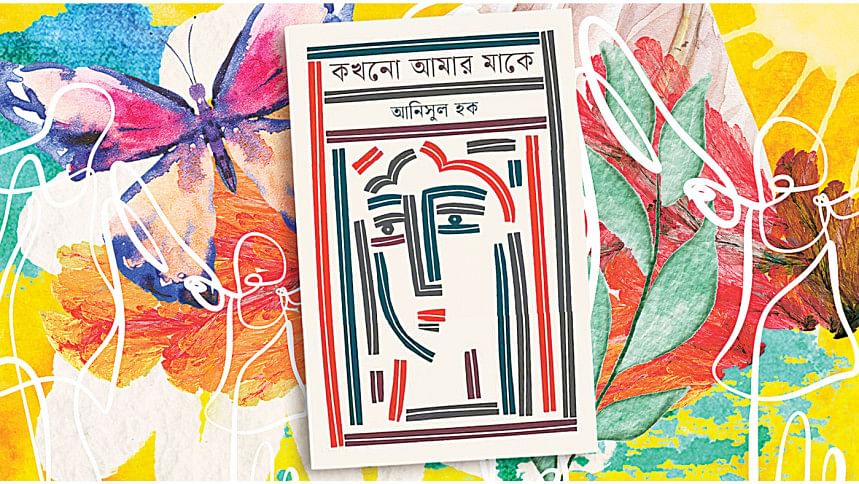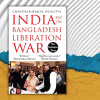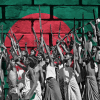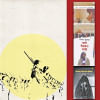The saga of a mother’s sacrifice and resilience

Anisul Hoque's Kokhono Amar Maa-ke is the story of appalling sacrifices made by a mother and her unwavering determination to secure a bright future for her children. Set amidst the rustic charms of Phulpur, a quaint village typical of the 1970s countryside in Bangladesh, this narrative tells the story of the upbringing of four siblings whose lives are profoundly influenced and shaped by their "majestic" mother, Shefali—affectionately called 'chotoma'. The novel's title alludes to Shamsur Rahman's poem Kokhono Amar Maa-ke, and the narrator of the novel essentially embodies the voice of the poem. The first few lines, in my translation, stand: "I've never heard my mother sing any song./ Nor do I recall if she ever sang lullabies to me."
The novel has a calming start. On a tranquil Falgun night when "the moon's inner core comes out to light up the earth", Mablu, the narrator, broods over the past, and memories come flooding back. He reminisces about his siblings, Bablu, Dablu, and Lovely, their school days, their childhood escapades across the field of Tepantor, and most importantly, their Chotoma's sacrifice, resilience, and death. What appears to be crucial is the narrator's overwhelming urge to reveal to readers why his Chotoma, despite once being an award-winning singer during her college days, has stopped singing. The whole story spins around unravelling this mystery that keeps readers eagerly anticipating till the closing chapters. On her deathbed, Chotoma unfolds some disturbing truths: her getting raped by Pakistani forces, her traumatic journey through motherhood, and her marriage with Rafiqul Islam, Mablu's freedom fighter father. The writer's literary prowess shines through the thematic exploration of sacrifice and fortitude as well as the masterful delineation of rural life with remarkable credibility.
In fictional narratives, mothers often go through suffering which, in turn, fosters resilience and inspires them to champion causes of revolution, liberation, and emancipation. This truth is exemplified in characters, such as Maxim Gorky's Pelageya Nilovna in Mother (D Appleton & Company, 1906), Tahmina Anam's Rehana Haque in A Golden Age (John Murray, 2007), Anisul Hoque's Shafia Begum in Maa (Somoy Prakashan, 2004), and Shefali, the mother figure in the novel in discussion.
In this novel, each major character undergoes significant sacrifices, yet, Chotoma's stands out prominently. Prior to her marriage, she endures traumatic experiences at the hands of the Pakistani army, where "hell would descend every night". She describes the agony as if "her body [had been] lacerated by a thousand blades, wracked by the venomous bite of countless snakes". Her anguish is multiplied by her father's callous denial to bring her home. After marriage with Rafiqul Islam, Chotoma's devastated self forges her into a resilient and dedicated homemaker. Her singular mission now is securing a bright future for her four children amidst an increasingly adverse economic condition. Her transformation from victim to protector underscores the strength of her character.
On the other hand, Rafiqul Islam's life is also marked by sacrifices. He is disinherited by his father for marrying a war rape victim, and his siblings sever ties with him altogether. Situations take an unexpected turn when Rafiqul Islam is unjustly suspended from his job and subsequently imprisoned. His demise by massive cardiac arrest leaves his family grappling with financial insecurity. The impact of this situation weighs heavily on Bablu, the eldest son. He shoulders the financial burdens thrust upon the family, forsaking his own promising future.
One commendable feature of the novel is its faithful depiction of the formative years of the four siblings in the natural setting of Phulpur. For instance, they go to school with books in polythene bags, go into hiding prior to the announcement of school results, play football in rain-soaked fields adorned with pilipiliula clinging to their clothes, scrub their teeth with charcoal, ride bicycles by tucking one leg inside the triangular frame frequently paddling to propel it forward, and fly kites across the azure sky. Furthermore, the author's vivid description of the premises of Phulpur pilot high school and the dilapidated bungalow, the two important settings of the story, and lively presentation of flora and fauna not only offers visual splendour but also evokes olfactory sensations, breathing life into the narrative. However, the straightforward construction of the plot using conventional dramatic denouement, where all mysteries unravel in quick succession, may draw unfavourable critique from literary connoisseurs. Nevertheless, the author's dealing with themes, depiction of rural vistas, portrayal of characters, and use of befitting language overshadow the minor weaknesses.
The novel's true strength, indeed, emanates from the characterisation of Chotoma, the central character, whose sacrifice and resilience reverberate across the narrative. She stands as a poignant symbol of the countless unsung heroes whose contributions often languish in obscurity in the margins of mainstream historical discourse.
Muhammed Rukan Uddin, a literary enthusiast, teaches English at Chittagong University. He can be reached at [email protected].

 For all latest news, follow The Daily Star's Google News channel.
For all latest news, follow The Daily Star's Google News channel. 









Comments